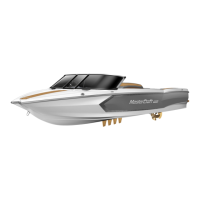2021 OWNERS MANUAL / 34
FAA/NATIONAL AERONAUTICAL CHARTING OFFICE
Distribution Division, AVN-530
1305 East-West Highway
Silver Spring, MD 20910
Telephone: (301) 427-5000
Email: 9-AMC-aerochart@faa.gov
http://naco.faa.gov/
FLOAT PLAN
A “float plan” is a written record indicating the planned destination
and approximate length of time for the outing. Sample forms are
available at the Coast Guard’s website. One should be completed
and left with a relative or friend prior to each trip. In case of an emer-
gency or failure to return within a reasonable period of time, perti-
nent information will be available to assist local marine police or the
Coast Guard in determining whether a search should be performed.
Be sure to notify the float plan holder upon return.
STAYING AFLOAT
It is commonly believed that someone dressed in heavy clothing or
waders will experience considerably more diculty staying afloat if
they fall overboard. This is not true. Air trapped in clothing provides
flotation and bending the knees will trap air in waders.
To stay afloat:
• Remain calm. Do not thrash about or try to remove clothing or
footwear. This leads to exhaustion and increases the loss of air
that may keep you afloat.
• Keep your PFD on.
• Keep your knees bent.
• Float on your back and paddle slowly to safety.
COLD WATER SURVIVAL
Sudden immersion in cold water can induce rapid, uncontrolled
breathing, cardiac arrest and other physical body conditions, which
can lead to drowning. Always wearing a PFD will help survival in rapid
immersion situations.
In other situations when entry into cold water is necessary:
• Wear a PFD.
• Button all clothing.
• Cover your head if possible and enter the water slowly.
• Keep your head out of the water if at all possible.
• Assume the Heat Escape Lessening Posture (HELP) position
as taught within a Coast Guard-taught safety course. Information
about HELP is available online.
Immersion in water speeds the loss of body heat and can lead to
2021MCOwnerManualFINAL.indd 34 8/26/20 1:51 PM

